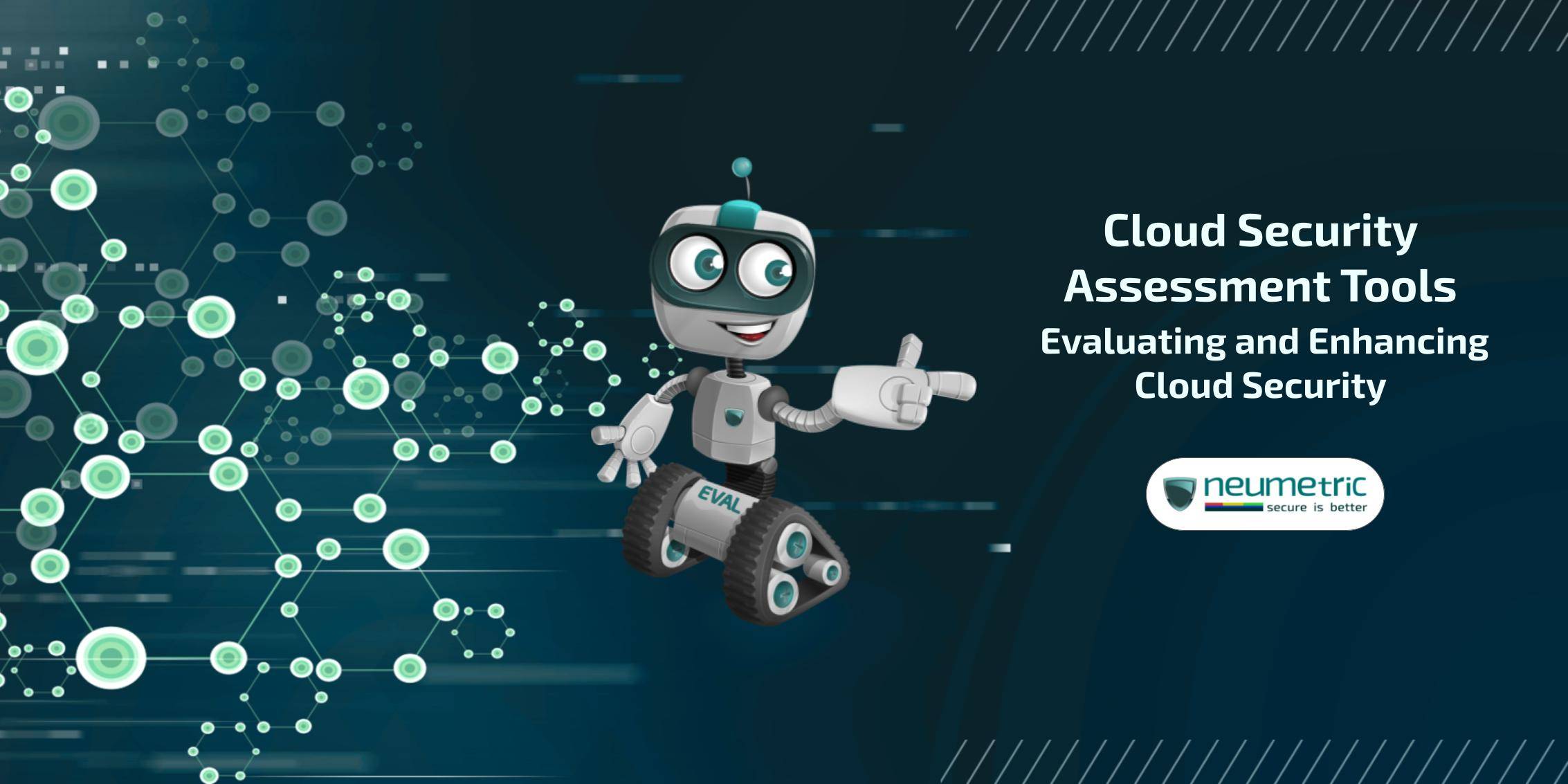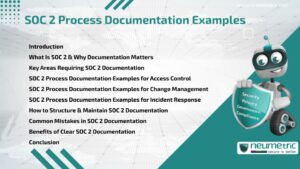Table of Contents
ToggleCloud Security Assessment Tools: Evaluating & Enhancing Cloud Security
Introduction
The cloud has become the backbone of our digital existence, powering everything from online collaboration tools to data storage solutions. As organisations embrace the cloud for its unparalleled advantages, the sheer volume & sensitivity of data being transferred & stored make it a prime target for cyber threats. As we navigate through the complexities of the digital age, the importance of robust cloud security cannot be overstated. The consequences of a security breach extend far beyond financial losses, reaching into the realms of damaged reputation, compromised customer trust & regulatory penalties. Safeguarding sensitive information in the cloud has become synonymous with safeguarding the very foundation of modern business operations.
Amidst the myriad of security measures, cloud security assessment tools emerge as a beacon of proactive defence. These tools are not merely accessories but integral components in the arsenal of any organisation aiming to fortify its digital infrastructure. By actively identifying vulnerabilities, monitoring for threats & ensuring compliance, these tools play a pivotal role in the ongoing battle against cyber threats.
The Landscape of Cloud Security
- Data Breaches: The nightmare scenario for any organisation, a data breach not only compromises sensitive information but can lead to irreparable damage to a company’s reputation.
- Unauthorised Access: With the cloud being accessible from virtually anywhere, the risk of unauthorised access is heightened. Unauthorised individuals gaining entry can wreak havoc on an organisation’s digital assets.
- Compliance Issues: Meeting regulatory standards is a continuous challenge, especially as they evolve. Failure to comply not only invites legal repercussions but can also expose vulnerabilities in the security infrastructure.
The world of cyber threats is dynamic, with attackers constantly evolving their tactics. From sophisticated phishing schemes to ransomware attacks, the threat landscape in cloud computing is a moving target, necessitating adaptive & proactive security measures.
Relying solely on reactive security measures is no longer sufficient. The need for proactive security measures is underscored by the continuously evolving nature of cyber threats. Organisations must be ahead of the curve, anticipating potential risks & vulnerabilities before they can be exploited.
Understanding Cloud Security Assessment Tools
The purpose of Cloud Security Assessment Tools extends beyond mere detection, aiming to fortify the digital bastions, ensuring data Confidentiality, Integrity & Availability [CIA].
Types of Assessment Tools
- Vulnerability Scanners: Vulnerability scanners tirelessly comb through cloud infrastructures, seeking weak spots & potential entry points for cyber adversaries.
- Penetration Testing Tools: Penetration testing tools go beyond scanning & actively simulate cyber-attacks. By mimicking real-world threats, they expose vulnerabilities that might escape routine assessments.
- Compliance Monitoring Tools: These vigilant guardians ensure that the organisation’s cloud operations align with ever-evolving regulatory standards. They’re the custodians of legal & industry compliance.
- Security Information & Event Management Solutions: SIEM solutions collect & analyse data from various sources, offering a comprehensive narrative of the security landscape, helping identify & respond to potential threats.
Selecting the Right Cloud Security Assessment Tool
- Cloud Environment Compatibility: The chosen tool must seamlessly integrate with the unique nuances of the organisation’s cloud environment, ensuring comprehensive coverage without disruptions.
- Scalability & Flexibility: As the digital realm expands, so should the capabilities of the chosen tool. Scalability & flexibility are key, ensuring the tool can evolve with the organisation’s changing needs.
- Compliance & Regulatory Support: A non-negotiable aspect, the tool should align with regulatory standards, ensuring the organisation remains on the right side of the law.
- Reporting & Analytics Capabilities: The tool’s ability to translate complex security data into understandable, actionable insights is paramount. Effective reporting & analytics enable informed decision-making.
Evaluating Cloud Security Posture
- Asset Identification & Categorisation: Like an inventory check, this involves identifying & categorising digital assets, understanding their criticality to the organisation.
- Threat Modelling: Predicting the moves of potential adversaries, threat modelling allows organisations to proactively fortify their defences against likely attack vectors.
- Risk Assessment: Understanding the potential impact & likelihood of identified threats, a risk assessment guides resource allocation for maximum impact.
Enhancing Cloud Security with Assessment Tools
It’s not enough to view security as an afterthought; it needs to be woven into the very fabric of development. By integrating assessment tools into the development lifecycle, from design to deployment, organisations create a proactive security culture. This ensures that potential vulnerabilities are identified & addressed at every stage, preventing security gaps from becoming chasms.
Collaborative Approaches to Security Across the Organization: Security is a collective effort & assessment tools act as unifiers, bringing teams together. Collaborative approaches involve breaking down silos between development, operations & security teams. By fostering open communication & shared responsibility, organisations can leverage the collective expertise of their workforce, creating a formidable front against potential threats.
Utilising Assessment Results for Informed Decision-Making: Assessment tools don’t just generate reports; they paint a picture of an organisation’s security landscape. Harnessing these insights empowers decision-makers to make informed choices. From resource allocation to strategic planning, the results of assessments become a compass guiding the organisation toward a more secure & resilient digital future.
Enhancing Cloud Security with Assessment Tools
It’s not enough to view security as an afterthought; it needs to be woven into the very fabric of development. By integrating assessment tools into the development lifecycle, from design to deployment, organisations create a proactive security culture. This ensures that potential vulnerabilities are identified & addressed at every stage, preventing security gaps from becoming chasms.
Collaborative Approaches to Security Across the Organization: Security is a collective effort & assessment tools act as unifiers, bringing teams together. Collaborative approaches involve breaking down silos between development, operations & security teams. By fostering open communication & shared responsibility, organisations can leverage the collective expertise of their workforce, creating a formidable front against potential threats.
Utilising Assessment Results for Informed Decision-Making: Assessment tools don’t just generate reports; they paint a picture of an organisation’s security landscape. Harnessing these insights empowers decision-makers to make informed choices. From resource allocation to strategic planning, the results of assessments become a compass guiding the organisation toward a more secure & resilient digital future.
Regulatory Compliance & Cloud Security
In the labyrinth of regulatory standards, the cloud can be a challenging terrain to navigate. Assessment tools act as guides, helping organisations traverse the complex landscape of compliance requirements. Understanding & aligning with regulations become not just a legal necessity but a strategic imperative to ensure the longevity & reputation of the business.
How Assessment Tools Aid in Meeting Regulatory Standards: Assessment tools are the sheriffs of the digital frontier, ensuring that the organisation’s operations comply with regulatory standards. Through continuous monitoring, vulnerability identification & risk mitigation, these tools become the guardians of legal & industry compliance, shielding the organisation from potential legal pitfalls.
Conclusion
The digital landscape is ever-evolving & so should our approach to security. Encouraging proactive measures involves instilling a mindset of continuous improvement, where security is not just a reaction but a strategic initiative. It’s a call to arms for organisations to stay ahead in the relentless pursuit of a secure cloud environment.
As we conclude our expedition through the clouds, it’s essential to acknowledge that the journey of evolving cloud security is perpetual. With each innovation, every threat thwarted, the landscape transforms. Organisations must remain vigilant, adaptable & proactive in the face of an ever-changing digital terrain. In the tapestry of cloud security, assessment tools are not just threads; they are the weavers, crafting a narrative of resilience & fortitude. So, let the journey continue, forging a path towards a safer, more secure digital future.
FAQ
How do cloud security assessment tools differ from traditional antivirus software?
While antivirus is like a vigilant guard at the entrance, these assessment tools are more like undercover agents, actively searching for potential vulnerabilities, monitoring for real-time threats & ensuring compliance. They’re not just keeping the bad guys out; they’re actively patrolling the digital hallways.
Can assessment tools really prevent cyber threats or are they more about damage control?
It’s not just about damage control; it’s about being one step ahead of the cyber game. Assessment tools not only identify vulnerabilities & potential threats but also help you fortify your defences proactively. It’s like having a cybersecurity crystal ball that lets you see & tackle threats before they become a problem.
How can integrating security tools into the development lifecycle improve overall cybersecurity?
Integrating security tools into the development lifecycle ensures that security isn’t a last-minute add-on but a core part of the construction process. This collaborative approach means identifying & fixing vulnerabilities at every stage, creating a fortress rather than just adding a moat after the fact.





